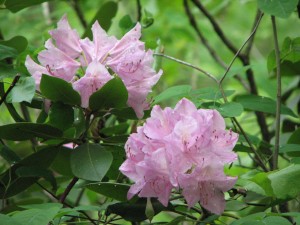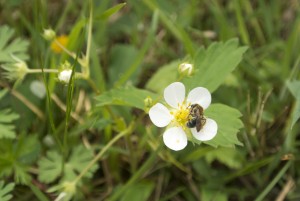It’s beginning to be that time of year again where the parking lots overflow at the garden centers and seemingly everyone is out working in their lawns and flower beds to prepare them for a new season. I thoroughly enjoy this time of year and enjoy the work that comes along with it. For some of us there is great satisfaction when we view our plantings taking root, the flowers blooming brightly, and for a lot of people the best satisfaction comes from the critters who take note of our work and harvest the nectar and berries that come from it. I’m one of those people. And this season, I’m going to make a strong effort to shift my plantings to more native species that are important to our native pollinators and bird populations.
There are many resources out there that you can check out to find neat plants that would work well for your landscape. As always, a well-researched plan for your yard will yield better results in what survives and what doesn’t. Noting how much sun an area gets, whether the soil stays wet for long periods of time, and how big a shrub or tree can grow in that area before it becomes a nuisance are all important things to think about before going to the store.
Jot a simple little diagram down, think about your spacing and doodle something on some scratch paper (see what I did, it’s simple and incredibly out of scale, but it makes you think about where to put things). Then check out some of these amazing resources we have such as this planting list from the North Carolina Botanical Gardens or better yet, head to the gardens to see many of the plants listed in person. It’d be one more excuse to get out and see the amazing gardens they have there. You can make your plan even more complicated by looking at when things bloom to have a variety of colors throughout the year. My redbud trees start out the color in the spring and by the time they’re calming down, the dogwood comes right along bringing more wonderful color to the yard. While I definitely don’t have the most native or pollinator friendly yard right now, I’m sure working towards it.
So yes, this blog has a call to action. I want everyone who can to try their best to plant some native species.
If you think I’m crazy by assigning all this homework, that’s fine. But I do encourage you to at least plant some milkweed in your yard. The Monarch butterflies will thank you for it. Meanwhile at TLC, we’re working hard on that call to action. Last year, TLC staff and volunteers planted 2,000 shortleaf pine and over 500 native forbs at our Horton Grove Nature Preserve, and we have quite a few more ready to go in this spring. Last season, we planted wild quinine, bee balm, wild indigo, black-eyed susan, and quite a large amount of milkweed and much more. This growing season, I’m sure you’ll be able to notice many of these areas along the Holman Loop at Horton Grove. Look towards the areas with the metal posts, that usually marks one of the spots where many of these were planted.
So when you’re enjoying this sunshine and beginning the ritual of landscaping for the year, remember to plant native! There are many nurseries around that specialize in providing native options for you to plant. At TLC, we have support coming from Niche Gardens in Chapel Hill in growing out native forbs that were planted at our Horton Grove Nature Preserve. If you’re in Chapel Hill, they’re a good place to go. For more places nearby, check out the North Carolina Botanical Gardens list of recommended sources. Whether you’re working on a quarter of an acre, or an entire landscape like we do at Horton Grove, every plant can make a difference.
Want to learn more about plants and pollinators? Join TLC on June 22nd for Wild Ideas and learn all about ways you can help. This is The Dirt – Tales from the Field, a blog from TLC to our supporters. Thank you for everything you do for us!



